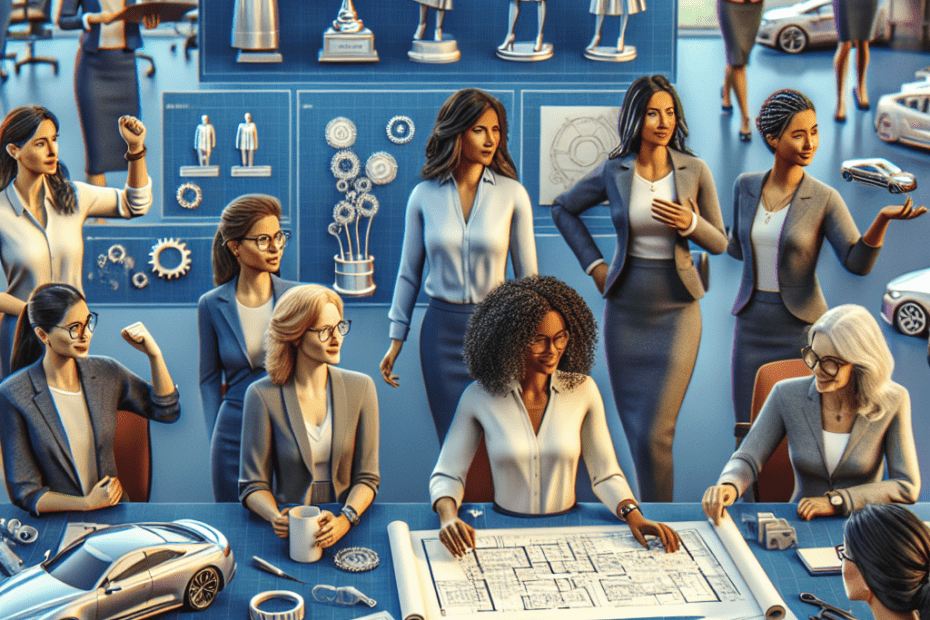“`html
The automotive industry, known for its dynamic nature and technological advancements, has seen significant contributions from women automotive leaders. These trailblazers are not only breaking stereotypes but also reshaping the future of the industry. Their impact is evident in various sectors, from design to engineering, and they continue to inspire future generations of women in automotive roles.
Women Automotive Leaders Breaking Barriers
Women have faced numerous challenges within the male-dominated automotive arena. However, their persistence and innovation have led to remarkable achievements, proving that talent knows no gender boundaries. Over the years, women automotive leaders have risen to critical positions, influencing decisions and driving growth.
According to a report by the McKinsey & Company, women account for 25% of the workforce in the automotive industry as of 2022. This figure highlights the ongoing efforts to bridge the gender gap and suggests a growing acceptance and support for women in this sector.
Key Pioneers in the Automotive Industry
Several women have made a mark as pioneers in this ever-evolving industry:
- Mary Barra: As the CEO of General Motors, she became the first female CEO of a major global automaker. Her focus on sustainability and technological innovation has been pivotal.
- Danielle Emerson: Known for her work in automotive design, she has paved the way for future designers, incorporating both practicality and aesthetics.
- Linda Hasenfratz: CEO of Linamar Corporation, she has led her company to a prominent position as a leading global supplier of advanced mobility solutions.
| Name | Position | Contribution |
|---|---|---|
| Mary Barra | CEO, General Motors | Pioneered electric vehicle advancement |
| Danielle Emerson | Automotive Designer | Innovative design solutions |
| Linda Hasenfratz | CEO, Linamar Corporation | Expansion of advanced mobility solutions |
Impact on the Future
The influence of women automotive leaders is setting a precedent for future developments. Their vision and leadership are crucial in driving forward environmentally friendly practices and technological advancements. For instance, Mary Barra’s leadership at GM has emphasized transitioning to electric vehicles, a significant step toward reducing carbon emissions.
Additionally, studies from various organizations, like the Catalyst, show that companies with more women in leadership roles vs their counterparts have consistently outperformed in profitability and productivity. This data further endorses the benefits of diverse leadership in automotive companies.
Challenges and Opportunities
Despite their accomplishments, female leaders in the automotive industry still face several challenges. These include lack of representation, gender bias, and limited mentorship opportunities compared to their male counterparts. However, the increased recognition of their contributions is paving the way for change.
Opportunities are growing with initiatives aimed at encouraging women to pursue STEM education and careers. Programs such as “Automotive Women’s Alliance Foundation” provide valuable networking and development resources, inspiring more females to enter and excel in the field.
Key Takeaways
- Women automotive leaders are crucial in shaping the industry’s future through innovation and leadership.
- Despite making up a quarter of the automotive workforce, initiatives are needed to further increase gender diversity.
- Noteworthy figures like Mary Barra and Linda Hasenfratz showcase the impactful roles women can hold in the industry.
- Companies with diverse leadership tend to perform better financially and productively.
- Ongoing challenges such as gender bias continue to exist, but dedicated programs aim to overcome these barriers.
FAQ
-
Who was the first female CEO of a major global automaker?
Mary Barra became the first female CEO of a major global automaker, leading General Motors.
-
What percentage of the automotive industry’s workforce comprises women?
As of 2022, women make up 25% of the automotive workforce according to McKinsey & Company.
-
What are some contributions women leaders have made to the automotive industry?
Women leaders have contributed significantly to design innovations, sustainability initiatives, and technological advancements.
-
How does having women in leadership roles benefit automotive companies?
Companies with more women in leadership roles often see increased profitability and productivity, enhancing overall performance.
-
What initiatives support women entering the automotive industry?
Programs like the Automotive Women’s Alliance Foundation provide networking and development resources to support women in automotive careers.
“`
